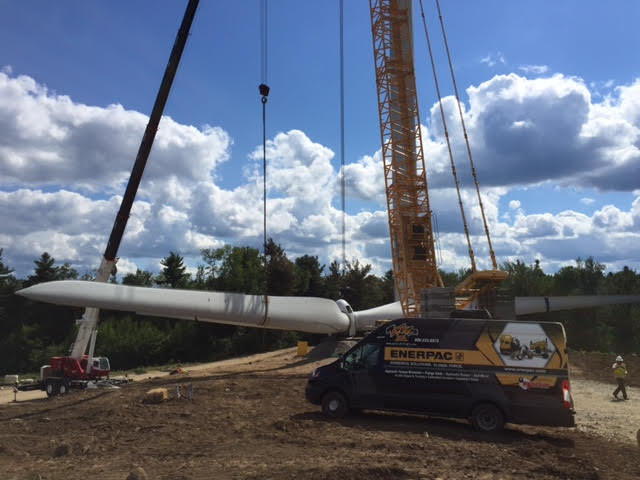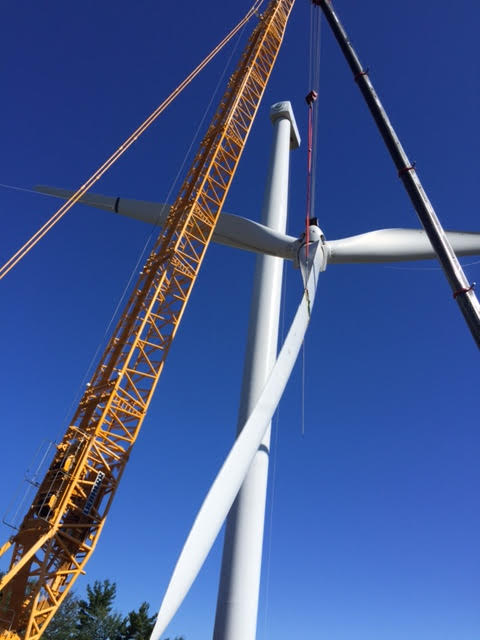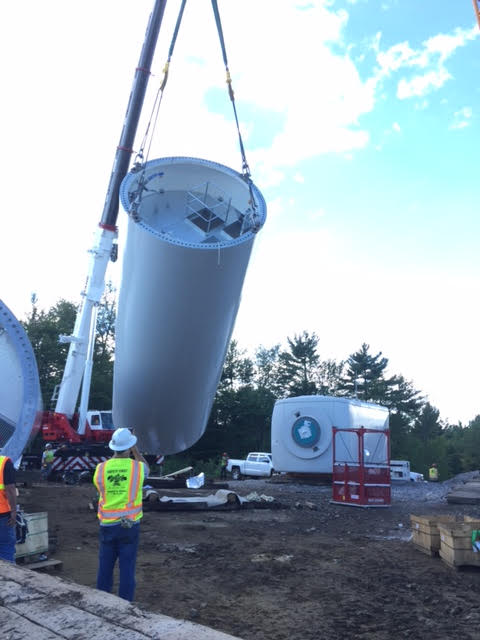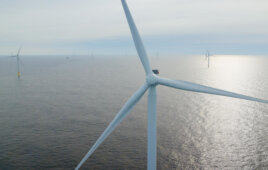While the construction of a couple of wind turbines installed in Colebrook, Connecticut this summer may have only taken a few weeks, the approval process to install wind power in the region has been years in the making.
“No one realizes how long we’ve been fighting for wind power and this project,” said Gregory Zupkus, owner of BNE Energy, a wind development company that initially proposed the turbines. It started as an idea some seven or eight years ago, and it’s been a long-fought battle that’s finally showing light.

A number of companies, including ENERPAC and Aztec Bolting, were involved in the project and helped connect Connecticut wind power to the grid.
However, the projects began with headwinds: a Connecticut ban on utility-scale wind power. The ban was enacted in 2011, ostensibly to provide time for the state’s Siting Council to enact regulations governing the siting of wind turbines in the state. BNE Energy put these regulations to the test with a proposal for three wind-power projects. The plan initially included two turbines in the town of Prospect, and three turbines in each Colebrook South (at Flagg Hill Road) and North (at Rock Hall Road).
“At first we surveyed the winds with two met towers at Prospect and Colebrook with the hopes of moving forward with the three wind projects,” explained Zupkus. “Unfortunately, the Connecticut Siting Council rejected the Prospect proposal because of the height and visual aspects of the turbines.”

The Colebrook South wind project is officially complete. It met a commercial operation date of October 13, 2015.
Nevertheless, Zupkus and his team didn’t give up and continued to pursue the Colebrook projects. Eventually, they attained approval from the Siting Council for the construction and operation of three 1.6-MW turbines at both Colebrook sites. “Even though we had a ton of supporters, it didn’t take too many opponents to slow the whole process down,” he said. “We’ve ‘broken ground’ three times just to lock in production tax credits.”
Back in 2010, a few local residents organized FairwindCT to stop BNE’s plan to build and operate turbines on the proposed sites. According to the Fairwind website, their mission is to ensure “with reasonable setbacks, wind energy can benefit the public without harming Connecticut’s residents’ health or the enjoyment of their homes and property.” The group appealed the Siting Council’s decision to approve wind turbines in Colebrook, and eventually took appeals all the way to the Supreme Court.
“First we went to Superior Court and then to Supreme Court just to prove that wind power was within legislation and didn’t affect air or water quality in the area. Of course, wind power doesn’t negatively impact either,” said Zupkus.
Although state law only required the council to consider air and water quality, Zupkus said that BNE Energy conducted numerous studies, including for bird, bat, and wildlife safety, and for flicker effects. Shadow flicker is the effect caused when rotating wind-turbine blades periodically cast shadows on surrounding homes and buildings. “We did every study possible, following the wind industry’s best practices for permitting and building this project,” he explained. “None of this was necessary by law, but we wanted to do everything to the highest standards.”
The judges of the Supreme Court ruled in favor of the Colebrook wind projects, and Colebrook South is now officially complete. Colebrook North must await one more approval from the U.S. Army Corps. of Engineers.
“The only thing is, the wind industry doesn’t wait around. While we were busy battling for these projects, things have changed and we’ve had to adjust accordingly,” said Zupkus. For example, BNE Energy was first going to go with three 100-m, 1.6-MW GE turbines but GE doesn’t make that size anymore. “So for now, we have a power-purchase agreement for five megawatts, and are proceeding with two turbines and leaving the third as a future potential.”

Project success involved team work. GE, Axis Renewable, and Aztec Bolting joined in the efforts of BNE Energy to get this project to the finish line.
Zupkus also wanted to ensure those in the neighborhood felt comfortable with the wind development. BNE Energy offered to buy the property closest to the Colebrook South turbines at more than its listed value. “We wanted to show our commitment to the community with this project. We are trying to make life better in the town, not worse,” said Zupkus, but it turns out the offer wasn’t necessary. “The house got scooped up on its own and the new owners paid a premium for it.”
As part of the contract, the potential new owners were warned that the first turbine would stand 1,000 ft. away from their home. Their response, according to Zupkus: “That’s great! We can’t believe people fight these things.”
“It’s been a long road, but there are so many positives that will come from this project,” he said. The 5-MW project will produce twice the amount of power that Colebrook annually uses. It will feed directly into the grid, one that was in desperate need of improvements after facing several severe storms, including Superstorm Sandy in 2012.
Construction was ongoing over the summer and Zupkus said the two turbines are finally erected.
“It’s taking years longer than we would have ever expected,” said Zupkus, “but it’s been well worth the fight for wind energy.”
Filed Under: Construction, Projects





What is future of wind world India Ltd in past this company known as enercon India Ltd.